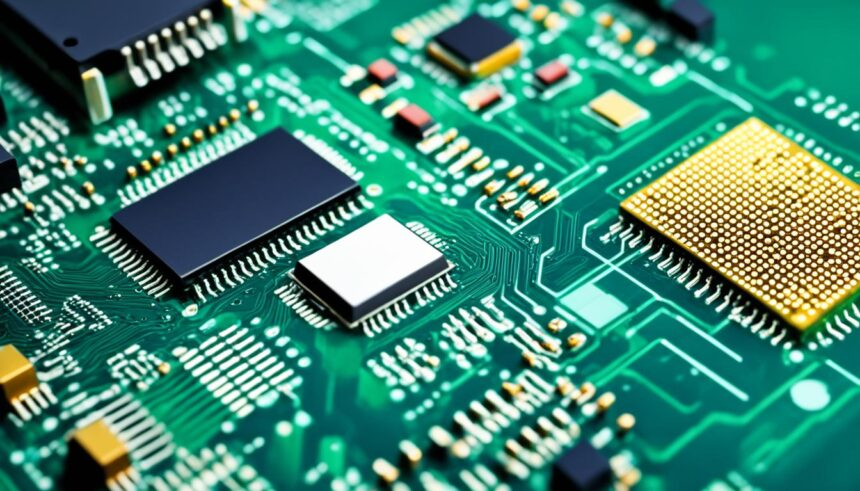Introduction
Electronics engineering is rich with specialized terminologies such as VLSI (Very Large Scale Integration) and ASIC (Application-Specific Integrated Circuit), which are critical to modern electronic design. Understanding the differences between VLSI board design and ASIC design is essential for engineers, hobbyists, and anyone interested in the field. Let’s delve into the unique characteristics and functions of these two technologies.
Unraveling VLSI Board Design
VLSI board design involves the intricate process of integrating a multitude of electronic components onto a single chip. The primary goal is to create circuits that are highly miniaturized, thereby enhancing functionality and performance. VLSI technology revolutionized the electronics industry by simplifying the production of microprocessors, memory chips, and other sophisticated devices.
The key challenge in VLSI board design is balancing power consumption with integration density. This is achieved by combining thousands, or even millions, of transistors on a single silicon wafer. VLSI technology has been pivotal in the evolution of electronics, leading to the development of smaller, faster, and more efficient devices, from smartphones and laptops to complex industrial equipment.
Understanding ASIC Design: Tailored for Specific Applications
In contrast, ASIC design focuses on creating customized integrated circuits for specific applications. Unlike general-purpose processors, which cater to a broad spectrum of devices, ASICs are tailored to meet the precise requirements of a particular system, offering unmatched performance and efficiency. By eliminating unnecessary components and incorporating specialized functions, ASICs reduce costs and enhance efficiency.
The ASIC design process involves the detailed creation of prototypes and the manufacturing of custom semiconductor chips. Engineers work closely with clients to understand their specific needs, enabling the development of ASICs that are finely tuned for particular applications. This level of customization allows for superior performance in diverse fields such as telecommunications, automotive electronics, and consumer electronics.
Differentiating Between VLSI and ASIC Design
Purpose: VLSI design focuses on integrating multiple circuits onto a single chip to serve a general purpose and is commonly used in mass-produced electronic devices. In contrast, ASIC designs are tailored for specific applications, offering customized solutions that cater to unique user requirements.
Flexibility: VLSI chips are highly programmable and versatile, suitable for a wide range of applications without significant modifications. ASICs, however, are optimized for specific tasks and, once manufactured, cannot be easily altered.
Scalability: VLSI technology allows for the mass production of uniform chips at a lower cost, making it ideal for large-scale manufacturing. While ASICs provide better performance for specialized applications, the initial development cost and time can be high, particularly for low-volume production.
Integration Complexity: VLSI design typically involves integrating pre-designed, standardized modules, which simplifies the process. On the other hand, ASIC design requires the creation of custom circuits for specific applications, which can involve complex and detailed design processes.
Development Time: VLSI chips generally have a shorter development cycle because they rely on existing components and standardized processes. In contrast, ASIC design, being highly specialized, often requires a longer development period, especially for complex or innovative applications.
The Role of VLSI Design Companies
VLSI design companies play a crucial role in the production of integrated circuits for various purposes, from general to specialized. These companies offer comprehensive solutions, including design, verification, and testing of VLSI chips, providing end-to-end services that are critical to the electronics industry.
Collaborating with VLSI design companies offers access to skilled engineers and advanced design tools, which accelerates the development process and speeds up time-to-market. These companies specialize in areas such as power optimization, signal integrity, and thermal management, ensuring the reliability and performance of the final product.
Conclusion
In summary, VLSI and ASIC design represent two fundamental approaches in integrated circuit design, each with its distinct advantages and applications. VLSI technology supports the creation of general-purpose chips suitable for mass production and standardization, while ASIC design offers bespoke solutions tailored for specific purposes, delivering superior performance and functionality.
As the electronics industry continues to evolve, VLSI and ASIC technologies will remain at the forefront, driving advancements in efficiency, power consumption, and capability. These technologies will continue to shape the future of electronic devices and systems, from smartphones and smart home gadgets to advanced automotive electronics and intelligent industrial machinery.
The importance of VLSI design companies will only grow, as their expertise and high-tech solutions will be crucial in advancing product development and improving the performance of integrated circuits. By leveraging VLSI and ASIC technologies, companies can meet the complex demands of modern electronics, paving the way for continued innovation and progress.
With VLSI and ASIC advancements on the horizon, we can expect transformative changes in how we interact with technology, ushering in an era of enhanced efficiency, productivity, and convenience across various aspects of our lives. From smarter devices to more intelligent systems, these innovations will redefine our relationship with technology, driving us towards a more advanced and connected future.

Leave a Reply